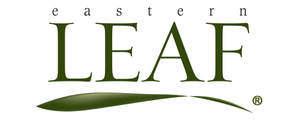| The success of your bonsai depends on a variety of factors, most notably watering and light. Below are some species specific guidelines to follow that will help ensure that your bonsai will stay healthy and happy. |
|
| Pruning Tips: The Tea Tree bonsai can be easily trained and pruned using the clip and grow method. We recommend making the cuts at least 4-5 pairs down from new shoots. This will ensure that there is wood in the branch to promote new bud growth. Directional pruning techniques can be used to fill out pad layers. The Tea Tree Bonsai tree constantly rotates leaves and sprouts new buds as old ones fall. This occurs most frequently when acclimating to new temperatures. |
|
| Fertilizing: We recommend fertilizing your bonsai tree every month with a bonsai fertilizer. Time release granules are the easiest to use and can be added every season. Reduce the amount of fertilizer during the winter. Take care to not over-fertilize as this can cause your leaves to burn or grow too leggy. |
|
 |
Lighting: Tea Tree Bonsai trees thrive best with natural sunlight. We recommend filtered natural sunlight. If placed in full sun, take care to manage your watering to prevent your tree from drying out. Also, full sunlight and warmer conditions can lead to some leaf burn. |
| Temperature Requirements: Tea Tree prefer warmer temperate climates with more humidity. Colder temperatures under 45 degrees Fahrenheit may result in frostbitten leaves. |
|
| Watering Requirements: Tea Tree bonsai trees require moderate watering. We recommend using a soft spray to soak the soil. Ensure that water penetrates not only the topsoil but also into the roots by checking that draining is occurring on the bottom of the pot. Keep the Tea Tree moist at all times. |
|
| Repotting: Tea Tree bonsai trees can be repotted during spring and fall for highest success rates. Avoid winter repotting as colder temperatures will make it harder for roots to recover. During repotting, we recommend trimming off older roots to promote new growth. After repotting, place tree in a shaded area for 2-3 weeks prior to placing back in full or partial sun. |
|
 |
Indoor / Outdoor: Tea Tree bonsai trees can thrive in both indoor and outdoor conditions. We recommend bringing the tree inside during the winter months to protect from freezing. |
